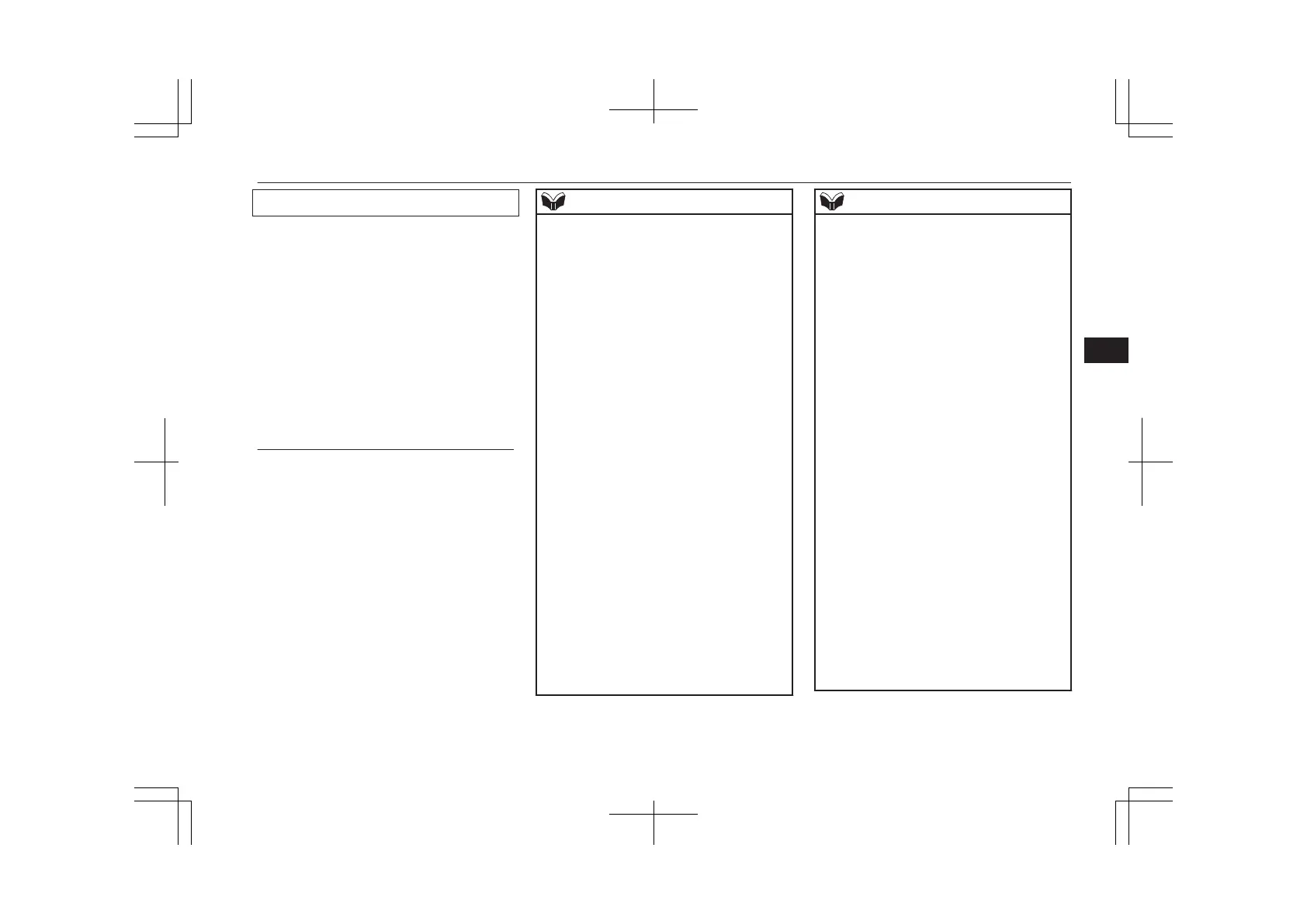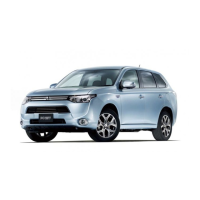Manual switching
Switching to low beam
1. Pull the lever towards you.
2. The AHB indicator will go off.
3. The AHB switch is pressed again, the
AHB will activated.
Switching to high-beam
1. Pull the lever towards you.
2. The AHB indicator will go off and the
high-beam indicator illuminates.
3. The AHB switch is pressed again, the
AHB will activated.
Automatic switching conditions
E00551600059
The high-beam headlamps illuminate when
all of the following conditions are met:
l
Your vehicle speed exceeds approxi-
mately 40 km/h (25 mph).
l
It is dark ahead of your vehicle.
l
There are no vehicles in front or oncom-
ing vehicles, or none of their exterior
lamps are illuminated.
The low beam headlamps illuminate when
any of the following conditions occur:
l
Your vehicle speed does not exceed ap-
proximately 30 km/h (19 mph).
l
It is bright ahead of your vehicle.
l
An exterior lamp of a vehicle in front or
oncoming vehicle is illuminating.
NOTE
l
The headlamps may not be switched from
high-beam to low beam under the following
circumstances.
•
A vehicle in front or oncoming vehicle is
hindered by any object such as continuous
bends, elevated median/island, traffic
signs, roadside trees.
•
Your vehicle passes an oncoming vehicle
suddenly on a bend with poor visibility.
•
Another vehicle crosses ahead of your ve-
hicle.
l
The headlamps may remain at low beam (or
be switched from high-beam to low beam)
when a reflective object (e.g. street lamp,
traffic signal, noticeboard and signboard) re-
flects light.
l
Any of the following factors may influence
the headlamp beam switching timing:
•
How brightly the exterior lamps of a vehi-
cle in front or oncoming vehicle illumi-
nate.
•
Movement or direction of a vehicle in
front or oncoming vehicle.
•
Only right or left exterior lamp of a vehi-
cle in front or oncoming vehicle is illumi-
nating.
•
A vehicle in front or oncoming vehicle is
a motorcycle.
•
Road conditions (gradient, bends and road
surface).
•
The number of occupants and luggage
load.
NOTE
l
The AHB recognises environmental condi-
tions by sensing a light source ahead of your
vehicle. Therefore, you may feel like some-
thing is not quite right when the headlamp
beams are switched automatically.
l
The system may not detect a light vehicle
such as a bicycle.
l
The system may not detect an ambient
brightness precisely. This causes the traffic
to be dazzled by high-beam or the low beam
to be maintained. In such cases, you should
switch the headlamp beams manually.
•
In bad weather (heavy rain, fog, snow or
sandstorm).
•
The windscreen is dirty or fogged up.
•
The windscreen is cracked or broken.
•
The sensor is deformed or dirty.
•
A light that is similar to the headlamps or
tail lamps is shining around your vehicle.
•
A vehicle in front or oncoming vehicle is
driven without lights, the exterior lamps
are dirty or discoloured, or the direction
of the headlamp beams is adjusted im-
properly.
•
It becomes dark and bright suddenly and
continuously around your vehicle.
•
Your vehicle is driven on uneven surfaces.
•
Your vehicle is driven on a winding road.
•
A reflective object such as a noticeboard
or a mirror reflects a light ahead of your
vehicle.
Combination headlamps and dipper switch
6-63
OGGE19E1
Instruments and controls
6

